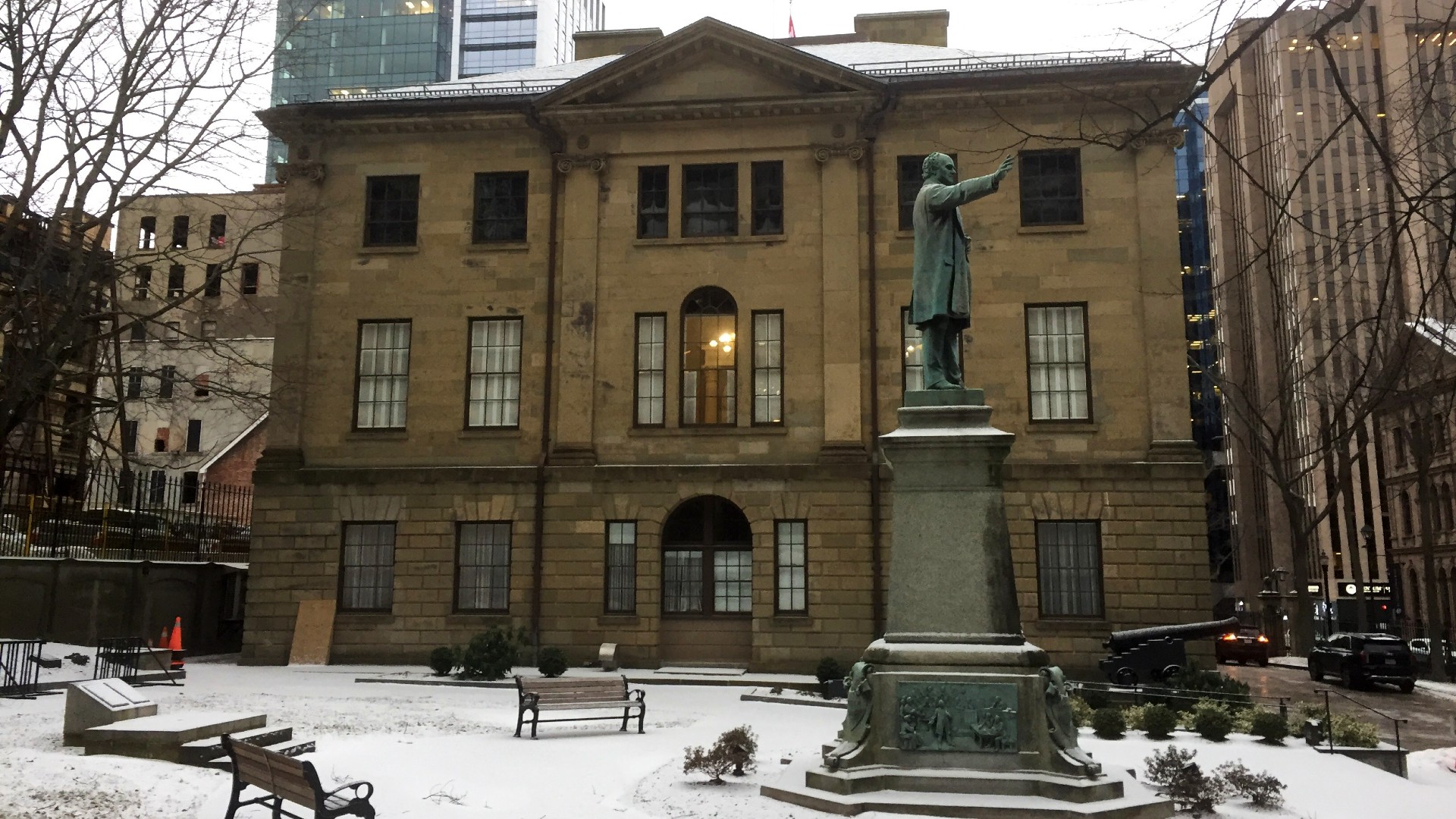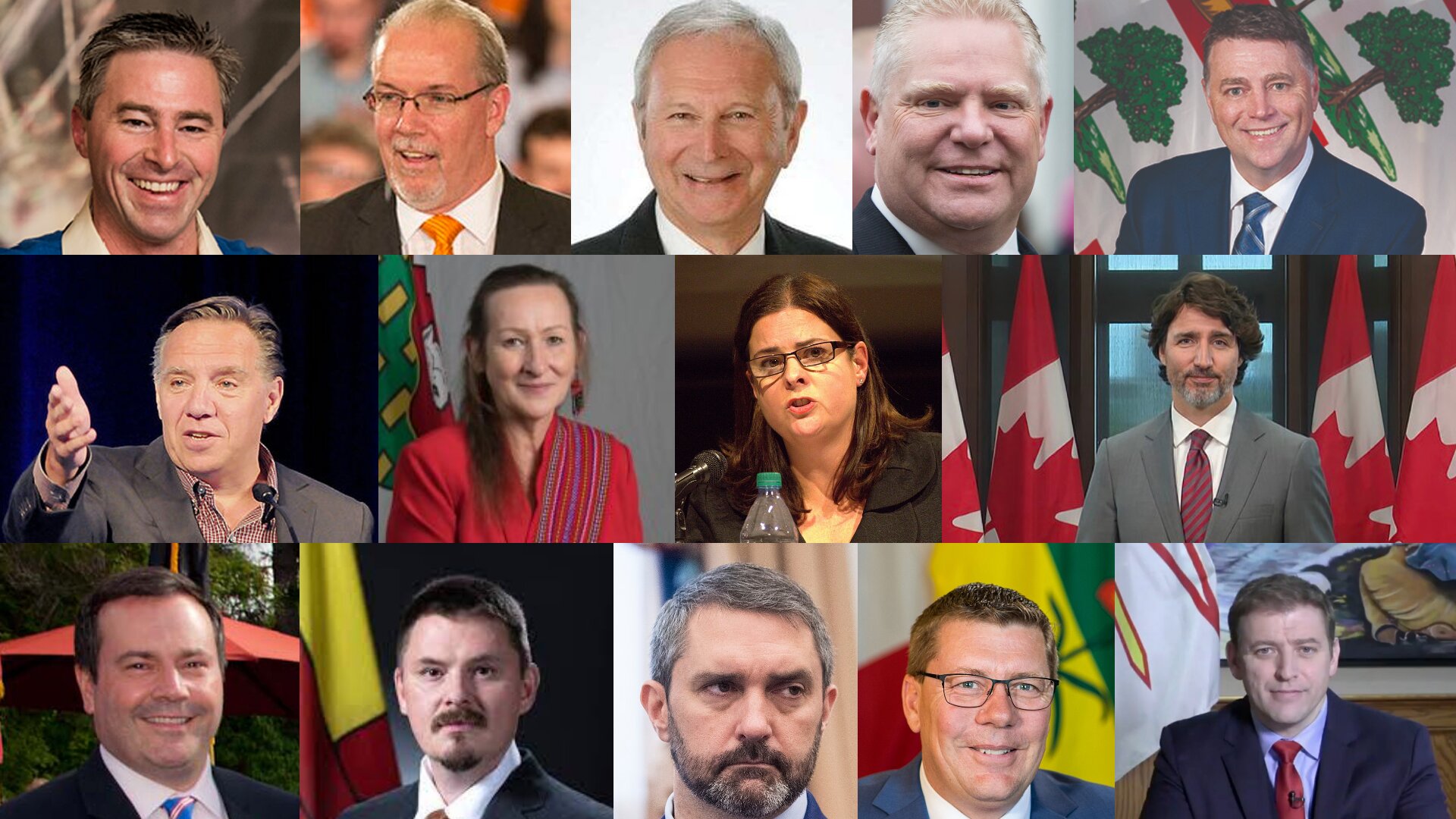Canadian politics
Alexa’s legacy: Gender parity falls short 42 years after McDonough’s election

caption
Province House on Hollis Street, taken Jan. 25, 2022.The legacy of Alexa McDonough may be filled with many accomplishments, but perhaps she will be best remembered for pioneering the chance for gender parity in Canadian politics.
McDonough — known to many Canadians as Alexa — became the country’s first woman to lead a provincial political party when in 1980, she was elected leader of the Nova Scotia NDP. It was a moment that signaled the possibility of Canadian women in powerful political roles.
But 42 years later, how many women actually occupy positions of political power?
According to data analysis by The Signal, the answer is not many. Of Canada’s 13 provinces and territories, only the Northwest Territories has a cabinet featuring a female majority (71 per cent women). In fact, there’s only one other provincial political cabinet with female membership of over 45 per cent — British Columbia (48 per cent women). Related stories
The country also only has two active female premiers: Manitoba’s Heather Stefanson and the Northwest Territories’ Caroline Cochrane.
Considering that Canada has a population of 38,598,519, of which 49.6 per cent are men and 50.4 per cent are women, it might be even more surprising to learn that only 78 of Canada’s 218 provincial cabinet ministers are not men.
Lori Turnbull, the director of Dalhousie’s School of Public Administration, said further change toward parity won’t happen without commitment from Canada’s political parties.
“(The political parties) are the ones who are putting people on the ballot, supporting candidates, recruiting them and sticking with them even if they’re not that keen on running,” she said. “The parties have to do the work to keep calling women back and encouraging them.”
Turnbull added that hostility and the traditionally male-oriented nature of Canadian politics makes this process harder.
“There’s not a great satisfaction rate among a lot of women who are elected,” she said. “They report being bullied and being targeted and having to deal with harassment on social media. Knowing that, of course it’s harder to convince a woman to run.”
It’s an experience that Claudia Chender, an MLA and the status of women spokesperson for the Nova Scotia NDP, has dealt with firsthand.
“We still live in a very patriarchal society,” she said. “It’s always more challenging for women to run. They have to answer externally and internally those questions of what they prioritize in ways that men don’t.”
Nova Scotia’s NDP has risen to the challenge. In the 2021 election, 35 of their 55 candidates did not identify as male, the highest percentage of any party in the province. And of the five seats they secured, four are occupied by female or non-binary MLAs.
According to Chender, this outcome is a facet of the party’s philosophy.
“We have a candidate search structure that emphasizes the need for diversity. From the very beginning, when we start to think about candidates for a given election, we have systems in place that ensure that kind of parity.”
However, statistics also show that overall, the Nova Scotia election was a male-dominated race. Of the 230 nominated candidates, only 98 identified as non-male. And of the current MLAs, only 20 of the 65 identify as women or non-binary.
Turnbull said it only becomes more challenging for non-male candidates if they want to compete for leadership positions.

caption
A collage of every provincial and federal leader in Canada. From left to right: Tim Houston (N.S.), John Horgan (B.C.), Blaine Higgs (N.B.), Doug Ford (Ont.), Dennis King (P.E.I.), François Legault (Quebec), Caroline Cochrane (N.W.T.), Heather Stefanson (Man.), Justin Trudeau (Federal), Jason Kenney (Alta.), P.J. Akeeagok (Nunavut), Sandy Silver (Yukon), Scott Moe (Sask.), Andrew Furey (N.L.)“It’s one thing to try and get more women as MPs or MLAs, but the real power is in the leadership and cabinet positions,” she said. “Not only are leadership competitions costly in terms of time, money and human capital, but there’s still a sense that voters aren’t as supportive as they could be.”
Provincial history supports Turnbull’s claim. Nova Scotia didn’t have its first female deputy premier until Diana Whalen in 2013. The province also had never had a female government house leader until 2021, when Kim Masland took the position.
However, Justin Trudeau’s federal Liberal government has has a different approach than its provincial counterparts. Not only is Chrystia Freeland the deputy prime minister, but Trudeau’s cabinet has 19 female and 19 male ministers.
“Trudeau’s 50/50 gender split cabinet is on brand for him,” Turnbull said.
“The public image he wants to have is of someone who is inclusive and treats women fairly and sees it as a value. He wanted to show that he is willing to change the power structure so as to be more inclusive. That being said, gender parity alone is not enough to ensure that there is equality.”
Turnbull added that Trudeau’s seeming desire to change the party power structure is interesting.
“When he made this party, he seemed to really want to cut loose the historical part,” she said. “He told the senators that they weren’t in the caucus anymore. He wanted to put some distance between himself and the old guard.”
The goal of a cabinet with parity is a trend which, according to Turnbull, Nova Scotia is starting to follow. Of Premier Tim Houston’s 19-person cabinet, seven members are women. This is an increase from Iain Rankin’s previous Liberal cabinet, which only had four women out of 17 members.
“Historically for Nova Scotia, this (current cabinet) is actually pretty good,” Turnbull added. “We’re not at 50/50 but it’s progress.”
Claudia Chender said the efforts of Alexa McDonough have played a big part in this move toward a Nova Scotian government with gender parity.
“I think that we’ve come a long way,” Chender said. “Alexa was an incredible person and an incredible politician who left a mark we’re only beginning to feel.”
The “mark” left by Alexa includes serving as inspiration for many Nova Scotian women including Chender, as well as Halifax Regional Municipality Coun. Lisa Blackburn.
“Alexa was the first woman politician that I really took notice of because she was local,” Blackburn said. “She was somebody that you would bump into at the grocery store. To me it meant a lot. It meant that (being a woman in government) was attainable. It was something I could do.”
And while Chender said she hopes to see others inspired by Alexa’s actions, she added that Alexa’s legacy can best be remembered by continuing to support women in government.
“When Alexa McDonough was elected there was no women’s washroom. When I was elected there was no maternity leave,” she said. “We’ve successfully changed that but there’s so much more that needs to be done. We need to keep asking the question of ‘are we using a gender lens?’”
About the author

Josh Neufeldt
The resident esports enthusiast of King's journalism. 4th year with an affinity for gaming, movies and food.
